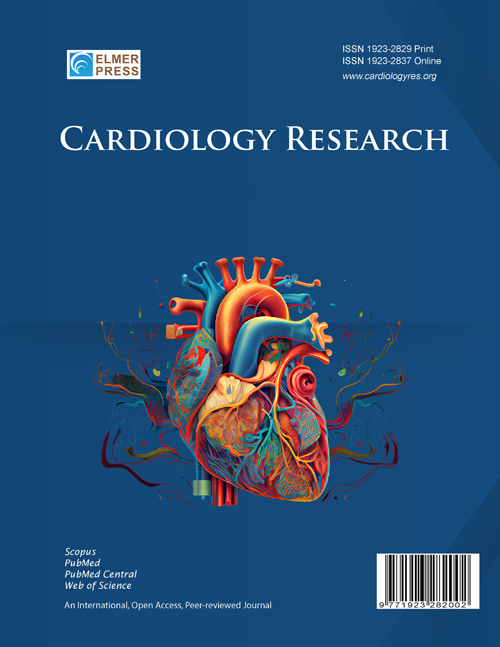Effect of Hyperperfusion on Successful Collection of Arterial Blood Gas Specimens in Patients With Acute Heart Failure
DOI:
https://doi.org/10.14740/cr2076Keywords:
Radial artery, Hyperperfusion, Blood gas specimen collection, Sphygmometer, Puncture success rateAbstract
Background: This study aimed to explore the effect of radial artery flow hyperperfusion on the successful collection of radial artery blood gas specimens in patients with acute heart failure.
Methods: From February 2023 to December 2024, 548 patients with acute heart failure in the database of the emergency rescue room of our hospital were divided into two groups: non-hyperperfusion group and hyperperfusion group. In the hyperperfusion group, arterial blood gas was collected using the radial artery hyperinfusion method (improving radial artery perfusion by blocking arteries other than the radial artery in the forearm using a customized sphygmomanometer with a double-airbag hollow cuff). The primary endpoint was the success rate of one-time puncture and the success rate of total puncture. Secondary endpoints included puncture frequency of > 3 times, puncture time, pain, puncture site hematoma, puncture site bruise, and patients’ satisfaction.
Results: In total, 548 patients were included, including 325 in the non-hyperperfusion group and 223 in the hyperperfusion group. The hyperperfusion group exhibited a significantly higher success rate of one-time puncture (63.4% vs. 83.4%, P< 0.001) and success rate of total puncture (82.5% vs. 94.6%, P < 0.001) compared to the non-hyperperfusion group. Additionally, the hyperperfusion group experienced a significantly reduced number of patients with puncture frequency > 3 times (26.2% vs. 9.9%, P < 0.001) and puncture time (48.59 ± 7.83 s vs. 26.43 ± 6.44 s, P < 0.001). This approach also effectively decreased the risk of puncture site hematoma (2.2% vs. 0.0%, P = 0.045), arm puncture place bruise (5.5% vs. 0.4%, P<0.001), and pain (3.0 (3.0, 4.0) vs. 2.0 (1.0, 2.0), P <0.001) and improved patients’ satisfaction after adopting the radial artery hyperinfusion method.
Conclusions: Radial artery hyperperfusion improved the success rate of puncture for radial artery blood specimen collection in patients with acute heart failure, reduced puncture complications, and improved patients’ satisfaction.

Published
Issue
Section
License
Copyright (c) 2025 The authors

This work is licensed under a Creative Commons Attribution-NonCommercial 4.0 International License.









